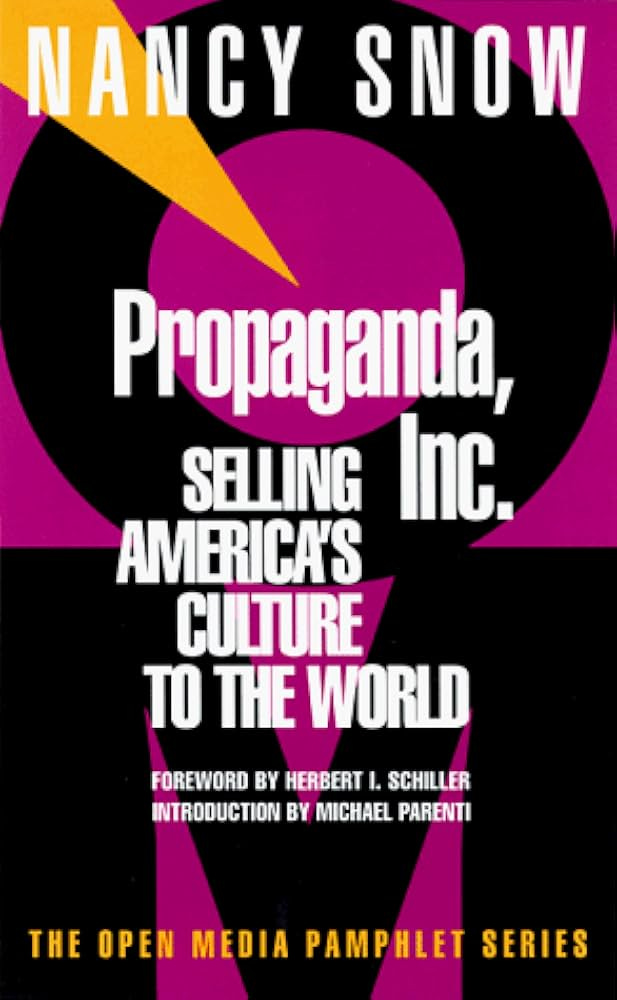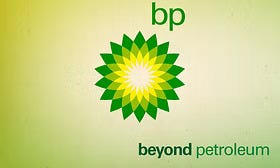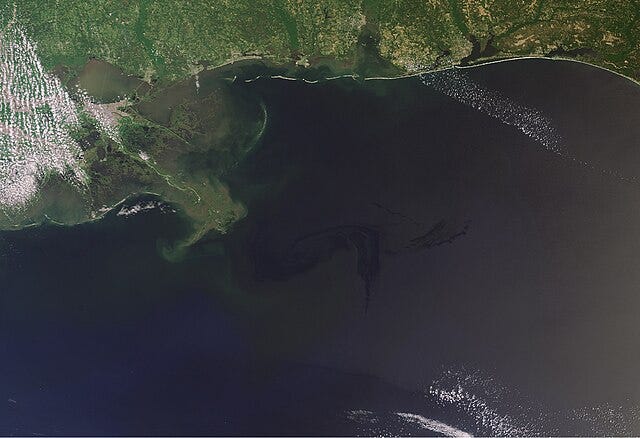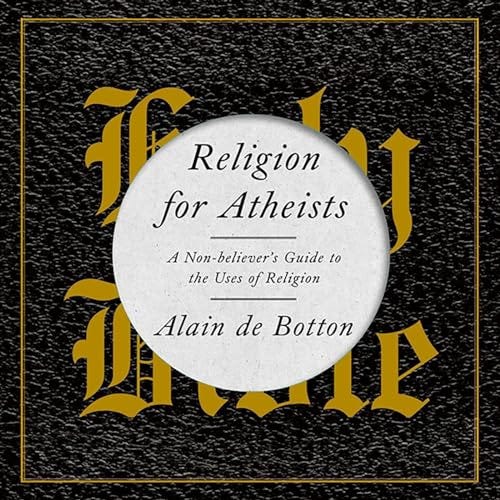How does a company bounce back after destroying the Gulf of Mexico? (Sorry, Gulf of America *eyeroll*) Sweet, sweet corporate propaganda, that's how!
“Beyond darkness, there is light… beyond fear, there is courage… beyond power, responsibility…” So begins the award-winning copy in BP’s “Beyond Petroleum” ad campaign. Sounding very much like an overly-serious Spiderman cartoon, these ads ran from 2000 to 2008, brainwashing the public into thinking that BP was mostly interested in … solar energy? Wind farms? Responsible use of super hero abilities? It’s unclear. But what is clear is that BP was moving “beyond petroleum.” This is funny because BP, once known as British Petroleum, is still very much about extracting sweet, sweet crude out of the ground.* BP is one of only six or seven “supermajors,” the biggest oil and gas companies on earth (It’s in the running to become one of the top ten biggest corporations on the planet as well). After 8 years of hearing that BP was moving “beyond” dirty old fossil fuel, a third of people surveyed thought it was now a “green” company. Then, in 2010 BP’s Deepwater Horizon oil rig exploded, vomiting about 206 million gallons of crude into the Gulf of Mexico. Don’t forget, just one quart of oil can contaminate up to 250,000 gallons of water, or create an oil slick that spreads for two acres. Let’s see, there are four quarts in a gallon, that means roughly 824 million quarts times 250,000 gallons of water… aaand my calculator can't figure it out. Anyways it wasn’t a very green thing for a green company like BP to do.
*(Even more hilarious, BP CEO Bob Dudley specifically put the lie to the “beyond petroleum” in 2013 when he said after an energy conference speech, “We have thrown in the towel on solar… Not that solar energy isn't a viable energy source, but we worked at it for 35 years, and we really never made money.”)
So, what did BP do after it accidentally wrecked the Gulf of Mexico? It cranked out some more ads of course! BP was terrified of losing customers. In fact, in the first two months after the spill, company revenues dropped an estimated 18 percent. Desperate to pull out of this nosedive BP took to the airwaves, spending $100 million in advertising in first four months after the disaster. That’s an average of $5 million a week. Two years later they committed to spending another $500 million in ads to repair their tarnished image. Apparently it worked because BP never went out of business. In fact, later studies showed that the communities with the most exposure to BP’s earlier “Beyond Petroleum” campaign had the smallest losses after the disaster… the people there had somehow been inoculated by BP’s advertising. It would seem all’s well that ends well, the company has fully bounced back with more than a quarter of a trillion dollars in revenue in 2022. The Gulf of Mexico… not so much. Tens of thousands of jobs lost, a lowball $9 billion in economic impact, lasting damage to U.S. wetlands. That’s how it’s done folks. That is some good corporate propaganda.
The word propaganda obviously has a negative connotation in modern society because of its association with totalitarian regimes. But in truth propaganda is a neutral concept that means “influence” rather than the manipulation of opinion in a particular direction. Writer Alain de Botton points out that the Catholic Church has been using propaganda techniques for hundreds of years, but we don’t think it’s a bad thing because they were propagating positive concepts like modesty, friendship, and courage.
While it’s true that the word has fallen out of fashion, the process is still very much alive and actively shaping opinions every day. There’s no such thing as a “propaganda industry” today. It goes by a much nicer name today: Public Relations. Did you know there are roughly three PR professionals for every journalist working in the United States today?* *(That’s 244,730 PR pros in 2019 according to the US Bureau of Labor Statistics, versus around 88,000 journos. Though some industry insiders put the ratio at closer to 6 to 1.) That's up from roughly 1 to 1 as recently as 1995.

If you have any lingering doubts that propaganda and public relations are the same thing, consider the three most important characteristics of propaganda, according to communications professor Nancy Snow. First, propaganda is communication designed to intentionally change the opinions of a target audience. Second, the person communicating has something to gain by presenting their case to the audience. Third, there is usually a one-way flow of information from the person transmitting their message to those receiving it (unlike, say, education which tends to be a two-way relationship between teacher and student). Propaganda and public relations have the same goals and job description, ergo, they are the same thing. Revenues in the American public relations industry were about $14 billion in 2008 alone. As Noam Chomsky has said, corporations and the rich don’t spend billions on propaganda for the fun of it, they do it for a reason.
Please give a like, comment, restack, and share to help others find me here on Substack.
Let’s make them pay.

















Share this post